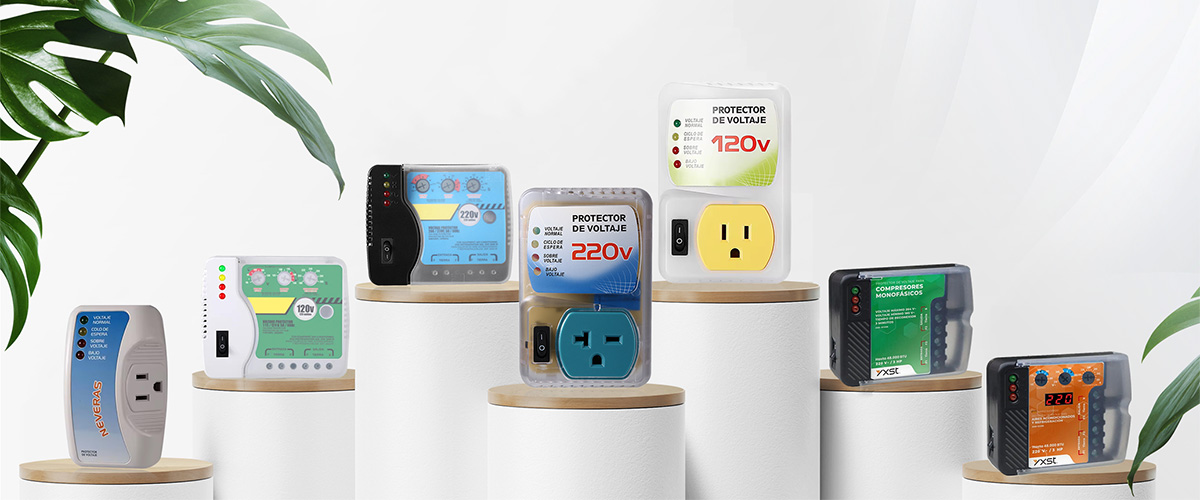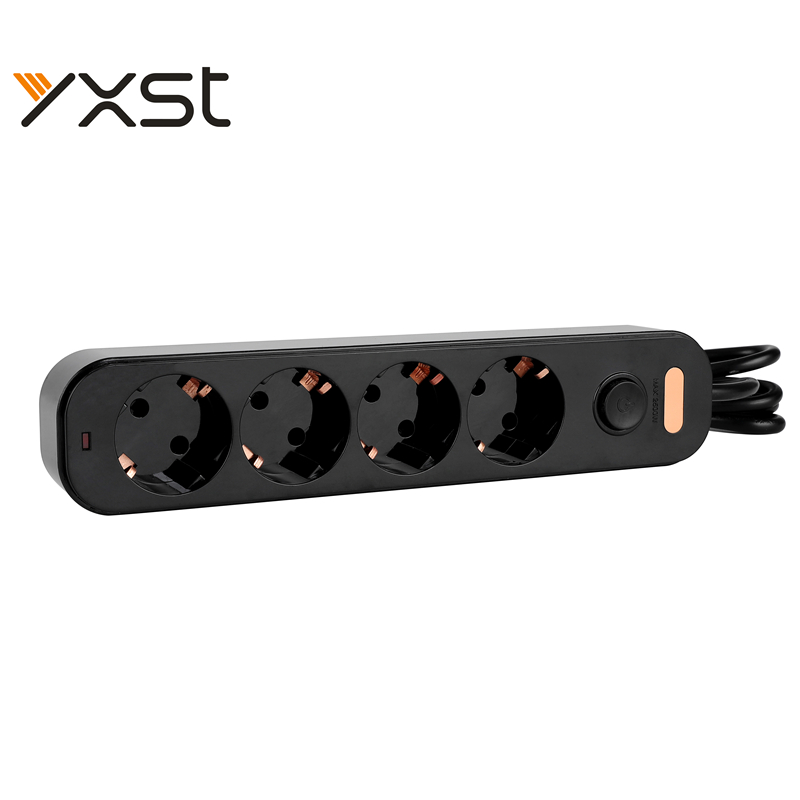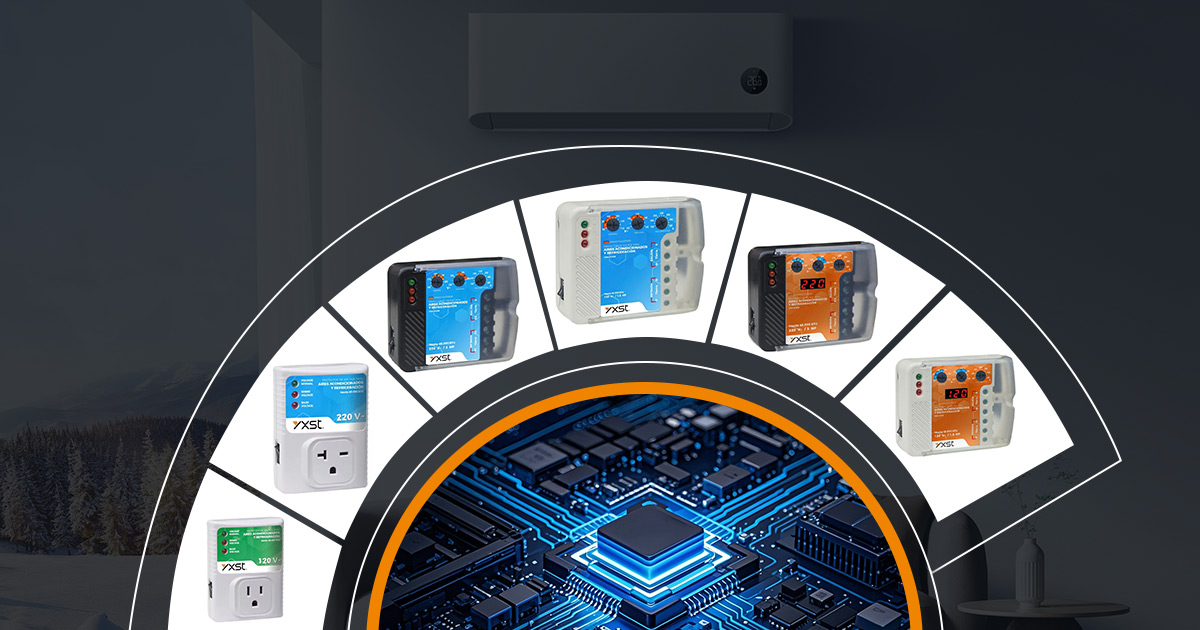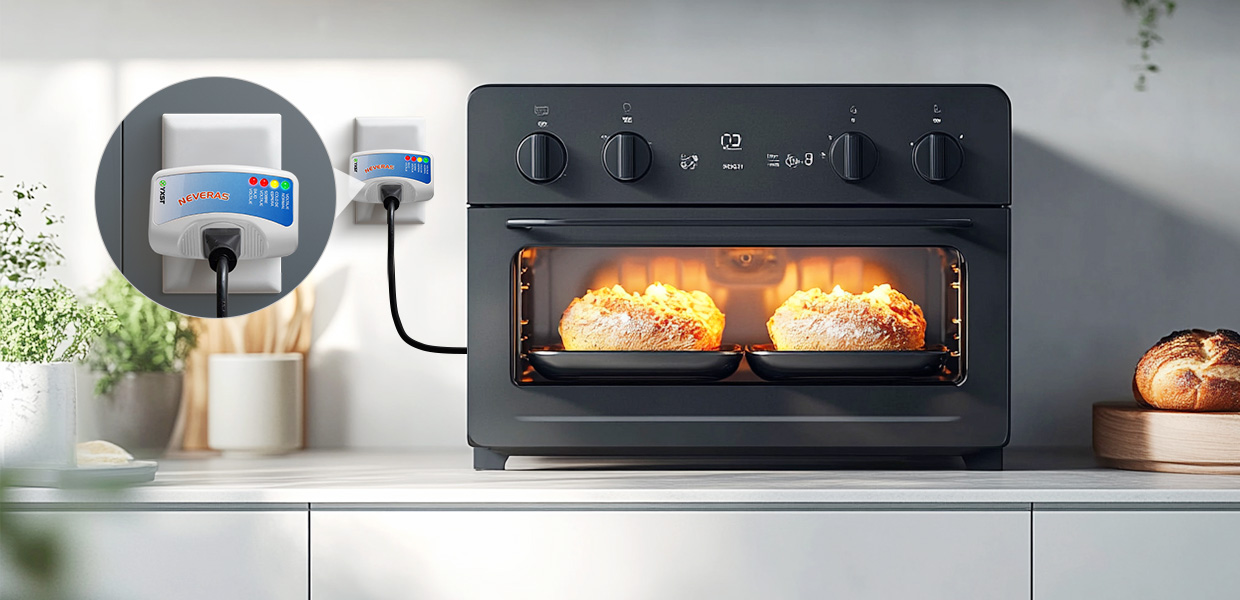Surge Protectors vs Power Strips: 5 Key Differences You Need to Know
Date:2025-03-11 Click:555
In this context, choosing the right power management tools becomes particularly important. Two common solutions are surge protectors and power strips. Although both are designed to provide a safer and more stable power supply, there are significant differences between the two. This article will delve into the features, functions, and application scenarios of these two products and help readers understand how to make a wise choice based on their needs.
First, we will explain in detail what surge protectors and power strips are, then compare their main differences. Next, we will analyze the pros and cons of each so that readers can fully understand the specific situations in which each product is suitable. Finally, through real cases and user feedback, we will show how these products perform in different environments, providing readers with practical purchasing advice. I hope that through this article, you can better understand and master the characteristics and applications of these two important power management tools to ensure that your electrical equipment is optimally protected and achieves efficient power use.
What is a surge protector?
Surge protector is a device designed to prevent damage to electrical equipment caused by instantaneous high voltage shocks (i.e. "surges" or "bursts") in power systems. When the power grid is abnormally high voltage, the surge protector will respond quickly to absorb or divert this extra energy, thereby preventing damage to sensitive electronic equipment connected behind it. This protection mechanism is particularly important for precision instruments that are easily affected by voltage fluctuations.
The working principle of the surge protector is based on a special component inside it - a metal oxide varistor (MOV), which is a nonlinear resistor material. Under normal operating conditions, the MOV has a high impedance value and conducts almost no current; once it detects that the voltage exceeds the preset threshold, its impedance will drop sharply, forming a low-resistance channel, and releasing excess energy to the ground wire. In addition, some advanced surge protectors will integrate other protective measures, such as gas discharge tubes (GDTs) and transient voltage suppression diodes (TVS), to further enhance the protection effect.
Surge protectors are usually installed at the power inlet or directly connected to critical equipment to ensure that potential threats are intercepted the first time. It can not only deal with external surges caused by lightning strikes, but also handle internal surges caused by grid failures, switch operations, or when other electrical equipment is started. Therefore, in homes and offices, surge protectors are one of the important lines of defense to ensure the long-term stable operation of electrical equipment.
What is an Power Strips?
Power strips, also known as a multi-hole socket or multi-purpose socket strip, is a common home and office appliance accessory. It is mainly used to expand limited wall socket resources so that multiple electrical devices can be connected to the same power point at the same time. An extension cord usually contains one or more standard sockets connected to the main power socket through a longer wire, which is convenient for users to use electrical appliances away from the power source.
The design of the extension cord is very simple and intuitive: one end is a standard three-pin plug for plugging into the power socket on the wall; the other end is a series of neatly arranged sockets for various electrical device plugs. To improve the convenience and safety of use, many extension cords are also equipped with a switch button, allowing users to manually control the on and off status of the entire circuit. Some high-end models even integrate overload protection, short-circuit protection, and other functions, which can automatically cut off the power output when abnormal conditions are detected to prevent accidents.
In addition to the basic power supply function, the extension cord has a variety of variants to adapt to different usage scenarios. For example, some models have a rotating socket design, which is convenient for inserting large plugs without taking up too much space; some products with USB charging ports are particularly suitable for quickly replenishing power for mobile devices such as smartphones and tablets. Whether in the living room, bedroom, or office at home, power extension cord sockets can effectively solve the power consumption problem caused by insufficient sockets, greatly improving the convenience of life and work.
Difference between surge protector and power extension cord socket
Although surge protectors and power extension cord sockets may look similar and are used to extend the functions of power sockets, they are essentially different in core functions and technical features. Here are the main differences between the two:
1. Functional positioning:
- Surge protector: Focuses on protecting connected electrical devices from voltage surges. It absorbs or shunts instantaneous high voltages through built-in metal oxide varistors (MOVs) and other protective components to ensure that the equipment is not damaged.
- Power extension cord socket: Mainly to increase the number of available sockets so that multiple electrical devices can be used simultaneously on the same PowerPoint. It does not have active protection capabilities and is only a simple power distribution tool.
2. Technical features:
- Power extension cord socket: The structure is relatively simple, usually only including a few standard sockets and a connecting cable. Some high-end models may add overload protection and short-circuit protection functions, but this does not involve complex surge protection technology.
3. Application scenarios:
- Surge protector: It is suitable for occasions that require high reliability, especially those critical equipment that is susceptible to voltage fluctuations, such as computers, servers, medical equipment, etc. It is often deployed in network rooms, data centers, and home entertainment centers.
- Power extension cord socket: It is widely used in daily life and office environments, such as home living rooms, bedrooms, kitchens, and office workstations. In any situation where the number of sockets needs to be temporarily expanded can consider using a power extension cord socket.
4. Price range:
- Surge protector: Due to its complex technical characteristics and high manufacturing cost, the price of surge protectors is generally higher than that of ordinary power extension cord sockets. High-performance professional-grade surge protectors are even more expensive.
- Power extension cord socket: The price range is relatively wide, ranging from basic styles of a few dollars to multi-functional models of tens of dollars. Most consumers can flexibly choose the right product according to their budget.
5. Maintenance:
- Surge protectors: need to regularly check whether their protective components have failed, and replace parts that have exhausted their life promptly. Some brands provide indicator lights or alarm functions to remind users when to perform maintenance.
- Power extension cord sockets: Maintenance is relatively simple, just pay attention to keeping them clean and avoid excessive bending of the cables. Unless there is obvious damage, there is no need for frequent inspections.
In summary, although surge protectors and power extension cord sockets seem similar on the surface, they actually each play a completely different role. The former is dedicated to providing professional power protection services, while the latter is to meet the needs of more sockets in daily life. Only by correctly distinguishing the uses of the two and choosing them reasonably can we truly maximize their value.
Advantages and Disadvantages of Surge Protectors
Advantages
1. Powerful protection: The core advantage of surge protectors lies in their excellent protection capabilities. They can effectively resist various voltage surges from the power grid, including external surges caused by lightning strikes and transient voltage changes generated when internal devices start up. This not only helps to extend the service life of electrical equipment but also significantly reduces the safety risks caused by power accidents.
2. Wide applicability: Whether it is a family home or an office building, surge protectors can provide reliable protection for various types of electrical equipment. Especially for those precision instruments that require high voltage stability, it is particularly necessary to equip them with surge protectors.
3. Easy to install and use: Most surge protectors adopt a modular design, making the installation process simple and quick. Users can complete the setup by simply plugging it into an existing power outlet or fixing it in a distribution box. In addition, many models are equipped with clear LED indicators that display the current working status in real-time, which is convenient for users to monitor and manage.
Disadvantages
1. Maintenance requirements: Although surge protectors perform well during normal use, over time, the internal protection components may gradually wear out and fail. This means that users need to regularly inspect and maintain them, and replace related parts when necessary. This process not only adds extra expenses but also consumes a certain amount of time and energy.
2. Possible false alarms: Some low-end surge protectors may have the problem of excessive sensitivity, resulting in unnecessary alarms or power-off reactions within the normal voltage fluctuation range. This situation not only interferes with the user's normal use experience but may also cause unnecessary panic.
Overall, surge protectors occupy an irreplaceable position in many power management tools due to their excellent protection capabilities and wide range of applications. However, certain maintenance requirements are also issues that cannot be ignored. Therefore, when purchasing such products, users should fully weigh their actual needs and economic affordability to obtain the best cost-effective solution.
Advantages and Disadvantages of Power Extension Cord Sockets
Advantages
1. Expanding the number of sockets: The most significant advantage of power extension cord sockets is that they can significantly increase the number of available sockets. This is undoubtedly a great boon for homes and offices that often face the problem of insufficient sockets. Users can easily connect multiple electrical devices through a long cable without having to worry about the inconvenience caused by location restrictions.
2. Portability and flexibility: Compared with fixed wall sockets, power extension cord sockets have higher portability and flexibility. Users can adjust their placement as needed, and even carry them outdoors for use. This degree of freedom makes power extension cord sockets an ideal choice for temporary activities or emergency backup power.
3. Diverse functional options: There are many types of power extension cord sockets sold on the market, covering a wide range of types from basic models to high-end smart models. Among them, there are products with functions such as rotating sockets, USB charging ports, and timer switches, which greatly enrich the user experience. These additional functions not only improve the practicality of the socket but also bring more convenience to daily life.
Disadvantages
1. Lack of active protection: Although some high-end power extension cords have added overload protection and short-circuit protection, overall, they are still not comparable to professional surge protectors. In the face of sudden voltage surges or current overloads, ordinary power extension cords are difficult to provide effective protection, which undoubtedly increases the risk of damage to electrical equipment.
2. Potential safety hazards: If used improperly or of poor quality, the power extension cord itself may also become a source of safety hazards. For example, long-term overload operation can cause the cable to heat up or even cause a fire; sockets made of inferior materials may produce sparks due to poor contact. Therefore, when purchasing and using power extension cords, be sure to pay attention to product quality and safety certification information.
3. Affecting aesthetics: Since power extension cords are usually placed in conspicuous positions, their appearance design often directly affects the overall aesthetics of interior decoration. Although there are many stylish and colorful styles on the market, for users who pursue simple style or specific theme decoration, these additional "embellishments" sometimes destroy the original harmonious atmosphere.
Taking all the above factors into consideration, we can see that power extension cords have won the favor of consumers for their convenience and diversity. However, while enjoying the convenience they bring, we should not ignore the potential safety risks and aesthetic issues. Only by using such products scientifically and rationally and paying attention to quality control can we truly achieve the goal of safe and efficient electricity use.
How to choose the right product for you
Before choosing a surge protector or power extension cord, you must first clarify your specific needs. Here are some important considerations:
1. Device type and power requirements: If you need to protect high-value, voltage-sensitive devices such as computers, audio systems, or medical equipment, then a surge protector will be a better choice. For general household appliances such as TVs, fans, etc., power extension cords are sufficient. At the same time, consider the total power of the equipment and ensure that the selected product can carry the corresponding load.
2. Use environment: Different use environments determine the specifications and functions of the required products. For example, in areas with frequent thunderstorms, surge protectors are more important; while in situations where electrical devices need to be moved frequently, portable power extension cords are more suitable.
3. Budget constraints: Surge protectors are usually more expensive due to their complex technology and high-quality materials, while power extension cords are available at more price points. According to your financial situation, plan your budget reasonably and choose the most cost-effective product.
4. Safety standards and certifications: No matter which product you choose, make sure it meets local safety standards and certification requirements. Check whether the product has relevant certification marks such as UL and CE, which is an important basis for ensuring product quality and safety.
5. Additional functions: Some high-end models of surge protectors and power extension cords may have additional functions, such as USB charging ports, timer switches, remote control, etc. According to actual needs, choosing products with corresponding functions can improve the user experience.
6. Brand reputation and service support: Surge protectors and power extension cords of well-known brands often have better quality and after-sales service. Checking user reviews and brand reputation can help you make a wiser choice.
7. Maintenance and replacement cycle: Considering that the protective components of surge protectors will age over time, they need to be checked and replaced regularly. Power extension cords and sockets are less involved in such maintenance issues. Assessing whether you are willing to bear these subsequent costs and workload is also an important factor in decision-making.
8. Future scalability: Considering the number and type of electrical equipment that may be added in the future, choose products with certain scalability to avoid purchasing new equipment again in the short term.
By following the above steps, you can more accurately determine what type of power management tool you need and finally choose the product that suits you best. Remember, the right choice can not only improve the quality of life but also effectively protect your valuable property and personal safety.
Actual cases and user feedback
To get a more intuitive understanding of the actual application effects of surge protectors and power extension cords, let's take a look at some real cases and user feedback.
Home environment case
Mr. Zhang is an IT engineer. His home study is filled with various electronic devices, including desktop computers, printers, scanners, and network routers. As the living area is often hit by thunderstorms, Mr. Zhang decided to buy a high-performance surge protector to protect his valuable equipment. After some research and comparison, he chose a professional-grade surge protector from a well-known brand. This product not only has strong voltage surge protection capabilities but also comes with a USB charging port and intelligent timer switch function. Since the installation, Mr. Zhang has never encountered equipment failures caused by unstable voltage, and he is very satisfied with the performance of this surge protector.
In contrast, Ms. Li's home environment is different. Her living room is large, but the number of wall sockets is limited, which often makes it difficult to meet the simultaneous use of multiple electrical devices such as TVs, game consoles, and sound systems. To this end, Ms. Li purchased a power extension cord socket with a rotating socket design. This product not only solves the problem of insufficient sockets but also allows large plugs to be inserted smoothly through its flexible socket layout. Ms. Li said that since using this power extension cord socket, her living room has become more tidy and orderly, and she no longer needs to look around for available sockets.
Office environment case
Mr. Wang is the founder of a small startup company located in an old office building with relatively poor power infrastructure. To avoid data loss and equipment damage caused by voltage fluctuations, Mr. Wang equipped each office of the company with a surge protector. It turned out that this decision was very wise. Once, the building suddenly lost power and a huge voltage surge was generated when the power was restored, but thanks to the protection of the surge protector, all employees' computers and office equipment were not affected and the data was completely preserved. Mr. Wang was very grateful for this and thought that the investment was worth it.
On the other hand, the headquarters of a large enterprise where Ms. Zhao worked took a different strategy. Due to the large scale of the company and the different power requirements of each department, they chose to configure a multi-function power extension cord socket at each workstation. These sockets not only provide a sufficient number of sockets but also integrate a USB charging interface and timer switch function, which greatly facilitates employees' daily work. Ms. Zhao said that since using these power extension cord sockets, colleagues no longer have to worry about finding free sockets, and work efficiency has been significantly improved.
User feedback summary
Through the analysis of the above cases, it can be seen that surge protectors and power extension cord sockets have their advantages and are suitable for different usage scenarios. Surge protectors have won high recognition from professionals for their excellent protection capabilities and reliability, especially in the need to protect high.





